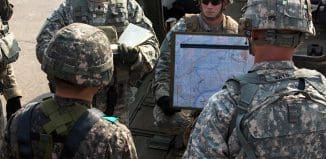U.S: First Responders Learn from Terror Attacks
This post is also available in:  עברית (Hebrew)
עברית (Hebrew)
 As attacks by Al Qaeda and other terrorist organizations continue to plague the world, the United States faces the critical challenge of learning from past terrorist attacks and applying those lessons to better prepare first responders to meet future threats and enhance our nation’s resiliency.
As attacks by Al Qaeda and other terrorist organizations continue to plague the world, the United States faces the critical challenge of learning from past terrorist attacks and applying those lessons to better prepare first responders to meet future threats and enhance our nation’s resiliency.
According to HS Today the House Committee on Homeland Security recently held a hearing on the matter in an effort to bolster collaboration between local, state and federal agencies in preparing and responding to future attacks.
New York City Police Department Deputy Commissioner of Intelligence and Counterterrorism John Miller outlined important lessons learned since the tragic events of September 11, 2001, as well as recommendations for responding to future attacks.
According to Miller, since the 9/11 attacks, Al Qaeda has demonstrated proficiency in using the Internet – specifically social media and online messaging – as a mechanism for conducting terrorism. Inspiremagazine, an online publication believed to be published by AQAP, recently featured stories idolizing the Boston Marathon bombers and Jose Pimentel, a 27-year old emboldened by the magazine to create a bomb to attack military recruiting stations.
iHLS – Israel Homeland Security
“We learned from the Boston Marathon bombing what we already suspected; major public events, which attract large crowds, continue to be a terrorist target,” Miller said. “The instructions likely used by the Boston bombers to make the pressure-cooker bomb came from the now infamous Inspire magazine article, How to Make a Bomb in the Kitchen of Your Mom. Those same instructions were also used by Jose Pimentel in New York City.”
These articles contain a call to arms, soliciting attacks on New York City, Washington DC, Los Angeles, Chicago and other major cities. According to Miller, acceptance of this call to arms affirms the reality of the threat from Al Qaeda, which can “emanate from a camp hidden in the tribal areas of Pakistan or from an apartment in the Washington Heights section of Manhattan.”
To respond to this threat, Miller stresses additional counterterrorism grant funding, greater interagency information-sharing and working with Department of Homeland Security (DHS) partners in research and development.






























